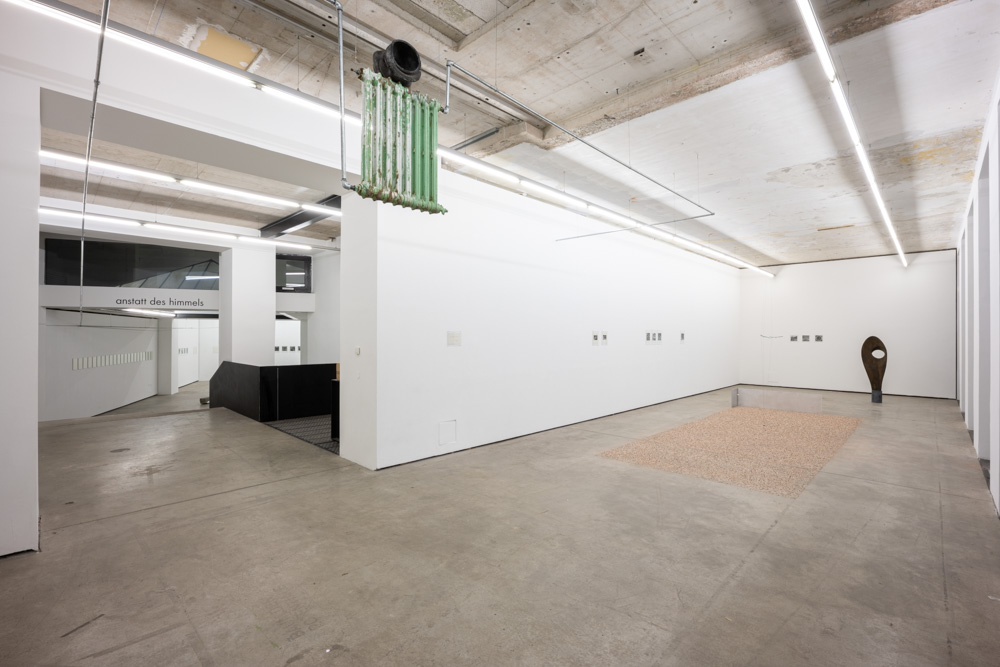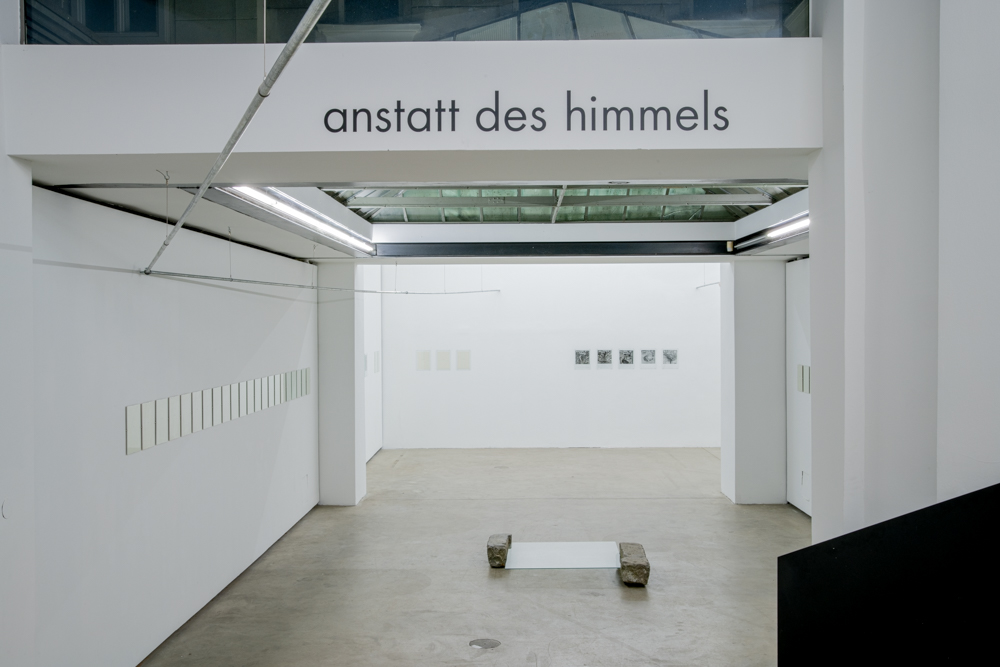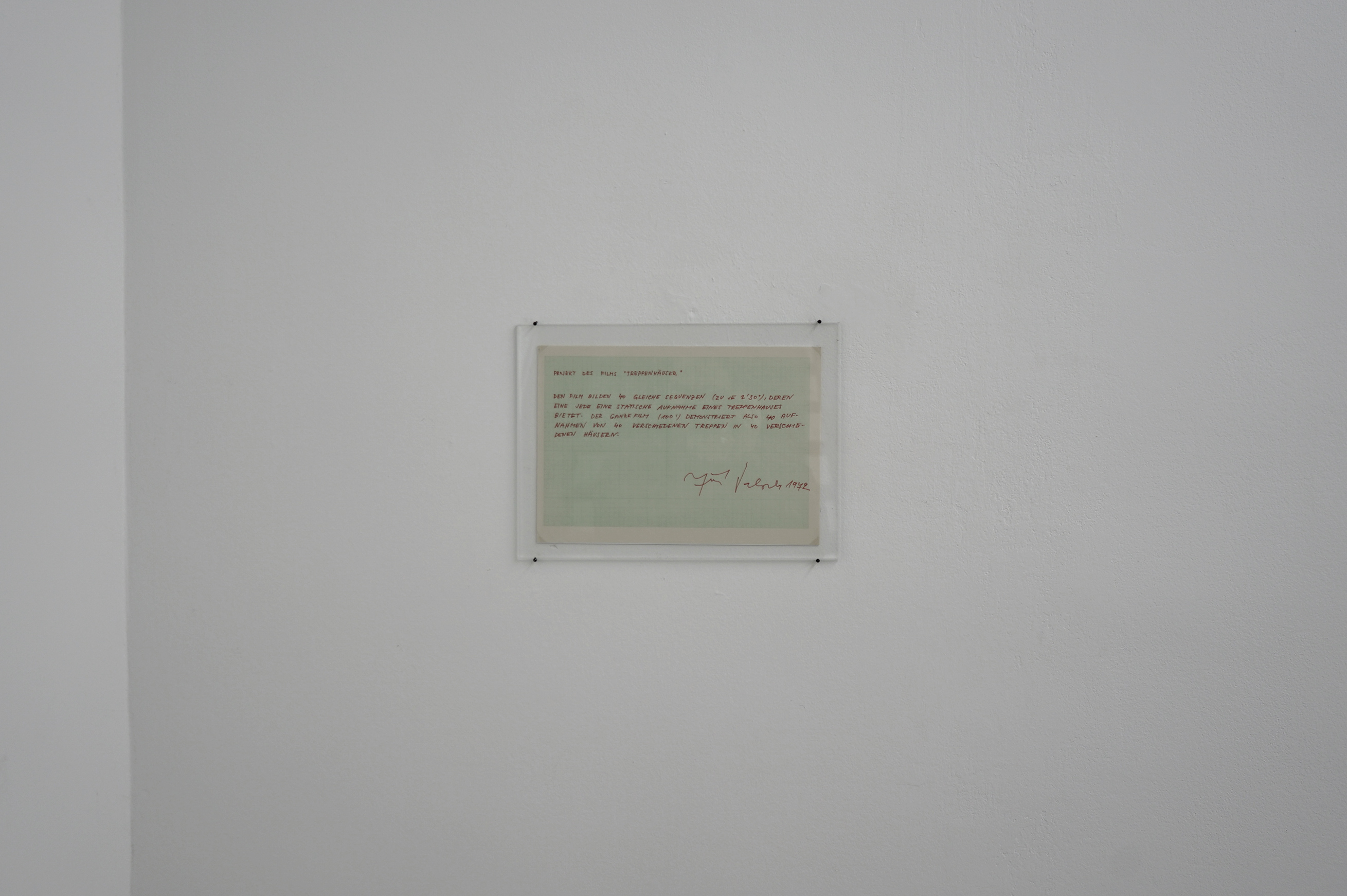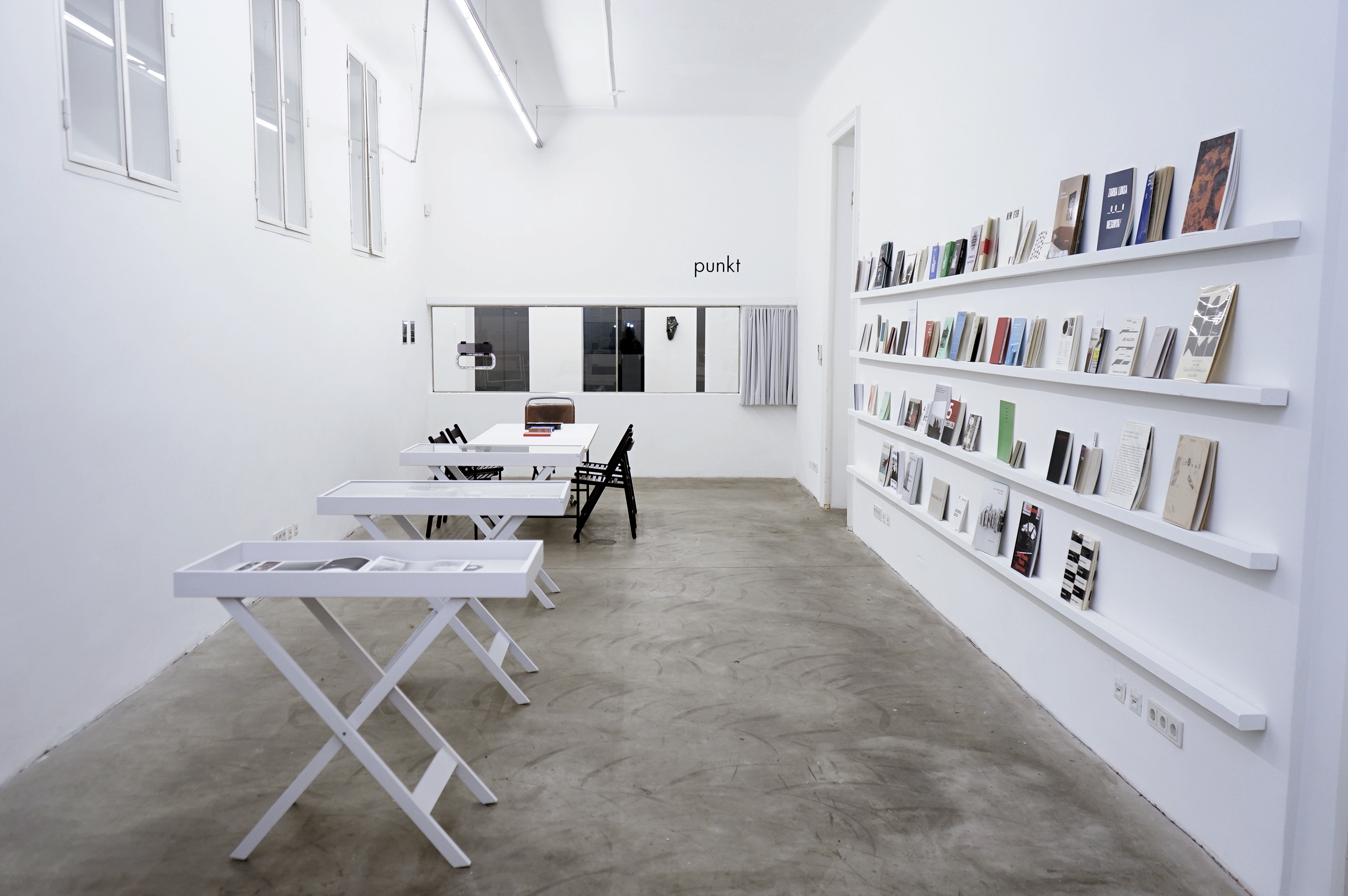I – in/finito
Katinka Bock, Bernhard Cella, Jiří Valoch
Curators: Fiona Liewehr in cooperation with Jana Písaříková and Ondřej Chrobák
Nov. 19, 2021 – Mar. 6, 2022
Franz Josefs Kai 3. Wien I. Raum für zeitgenössische Kunst































Presenting works by Katinka Bock, Bernhard Cella, and Jiří Valoch, the I — in/finito exhibition brings together three artistic positions from different generations and countries. Through their art, they reflect on an expanded concept of space that reaches beyond purely Euclidean, geometric aspects. In the works of these three artists, spatial perception constitutes itself, above all, through phenomena such as historical localization, action, social participation, and interaction. In their respective creative processes, language takes on a special role. It is understood not just as a means of communication, but as a key element in the process of forming space which, through a free play of associations, fosters reflection on a concept of space that develops athwart visible reality.
The artists were invited to engage directly with the Franz Josefs Kai 3 exhibition space and embark on an experimental game of call and response with each other. The exhibits in this show thus appear as the back and forth of a poetic dialog that evokes reflection on existential questions pertaining to the self and its relation to the (in)finiteness of experienced space.
Czech avant-garde artist Jiří Valoch is based in Brno, Czech Republic, where he was born in 1946. His optical, mechanical, and rhythmic poems as well as his typograms, photograms, and word installations explore the reciprocity of space and language. This exhibition presents key examples from his extensive œuvre, including limited edition booklets, produced with a mechanical typewriter, and visual poems he mailed in special envelopes. During the Cold War period, the latter facilitated an artistic exchange of ideas between East and West that eschewed government control. Furthermore, it has also been possible to make one of the artist’s long-cherished wishes come true, namely to temporarily inscribe himself into Vienna’s public space: A sidewalk word installation created specially for this exhibition welcomes visitors outside Franz Josefs Kai 3.
This exhibition is the first in Austria to cover a broad scope of works by Katinka Bock and Jiří Valoch. By contrast, Vienna-based conceptual artist Bernhard Cella (born in 1969)
has in the past inscribed himself into the local exhibition circuit through various projects. Cella conceives of the book as a potential space for reflection and production. He approaches publications not only as a documentary and illustrative medium, but also as a raw material, which he transfers to changed semantic contexts within the framework of sculptural and installative settings, thus opening up spaces for social action.
For this show, he has developed a linear structure that references the typographic design of the exhibition title “I – in/finito”, which is reminiscent of the lines of a book and corresponds directly with the works of Katinka Bock and Jiří Valoch.
Katinka Bock was born in 1976 in Frankfurt am Main, Germany. Over the past twenty years, she has developed a sculptural practice that is closely tied to notions of space, time, material, and processuality, while at the same time drawing on the processual traditions of 1960s art.
Her art touches on themes such as the history inscribed in the materials she uses most often, which include clay, wood, fabric, ceramics, stone, and bronze, or the processes of transformation they undergo, either naturally over time or due to the calculated use of elemental forces such as water, light, or fire. At the same time, she explores propositions articulated by contextual art, expanding them to allow for sensually rich sculptural forms. Bock graduated from Kunsthochschule in Berlin and the Ecole Nationale des Beaux-Arts in Lyon. She has been featured in solo exhibitions at Kestnergesellschaft Hannover (2020), Lafayette Anticipation, Paris; Centre Pompidou, Paris, (2019); Kunst Museum Winterthur; MUDAM Luxemburg; IAC, Villeurbanne/Rhône-Alpes (2018); Henry Art Gallery, Seattle, USA; MAMCO, Geneva (2014); Culturgest, Lisbon, Portugal (2012); and Kunstmuseum Stuttgart (2010). Katinka Bock lives in Paris.
Jiří Valoch (born in 1946 in Brno, Czechoslovakia, now Czech Republic) is an art historian, curator, artist, and poet. From 1965 to 1970, Valoch studied Czech and German studies as well as aesthetics at the arts faculty of Masaryk University in Brno. From 1963, he began creating concrete as well as non-semantic visual poetry. Between 1967 and 1978, he realized minimalist interventions, along with their photographic documentation, actions, and photo texts. Since the mid-1960s, he has also been active as a theoretician and art critic. In 1968, he organized one of the first exhibitions of computer art in Brno. Since that time, he has been producing artist’s books with non-verbal cut-out, optical, and rhythmic works. From 1968 to 1972, he was a member of Klub konkretistů (Concretists Club). From 1972 to 2001, he served as a curator at the Brno House of Arts (Dům umění města Brna) and was involved in the preparation of exhibitions by Czech artists (V. Boštík, Milan Knížák, Vladimír Boudník, J. Kolář, B. Kolářová, A. Šimotová, L. Novák), and after 1990 of international artists, as well (R. P. Lahnse, G. Graser, R. Mieldsam, R. Barry). Jiří Valoch lives in Brno.
This exhibition was made possible through the generous support of Franziska und Christian Hausmaninger, Vienna; Galerie Jocelyn Wolff, Paris; Galerie Meyer Riegger, Berlin; Mährische Galerie, Brno; Kontakt Sammlung, Vienna; and Sammlung Andreas Fogarasi, Vienna.
